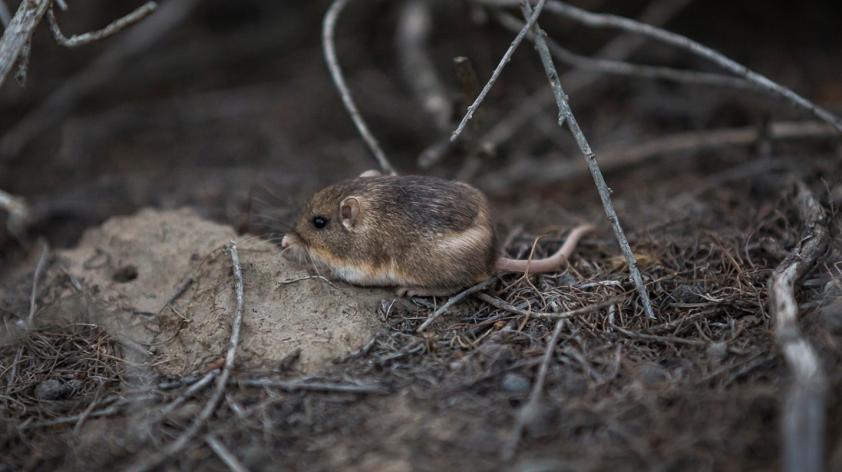
Three month check-up
On June 13, 2016, we released 50 Pacific pocket mice (PPM) into their new home in Laguna Coast Wilderness Park, California. This was the first reintroduction of these tiny mice back into the wild. We have been monitoring the population closely over the past several months, and we have now completed our last assessment of the year.
In September, we set out 237 live traps, and checked each trap two times a night (at 2330 and 0430) for three nights. We caught 11 PPM. All looked healthy, and were maintaining their weight. The most exciting piece of information we collected during this trap effort was that one female had signs of lactation indicating that she was nursing young. When animals are reintroduced back into the wild, the new population goes through different phases: settlement, establishment, growth and regulation. If we see reproduction, we are excited because it means that that the mice have settled, and the release population may be growing.
We remain cautiously optimistic that this release will be successful in establishing a 4th population. Though we captured only 11 out of 50 mice, there may be more out there. PPM can be trap shy so animals may be present on the site that may not be willing to go into our traps, and it is likely that some mice have already started to aestivate/hibernate. This period of relative inactivity for the mice most often begins late summer and is thought to be triggered by low food availability. During this time, PPM stay underground in their complex burrow systems and go in and out of torpor, waking up occasionally to eat from their caches. In the torpor state, they lower their body temperature, and metabolic rates to conserve energy.
For now, it is a waiting game while the mice sleep. We will trap in the spring of 2017 to determine overwinter survivorship, and again in July to monitor reproductive output. If we determine the PPM numbers are low, we will likely supplement the population with more animals from the conservation breeding facility.
We are in our early stages of the PPM reintroduction to their historic range, and we will not know the outcome of our efforts for quite some time, but we are thrilled with how well they are doing so far.
Reintroductions are challenging physically, emotionally, and financially, but in the case of the PPM, it is necessary in order to bring the mice back from the brink of extinction.













